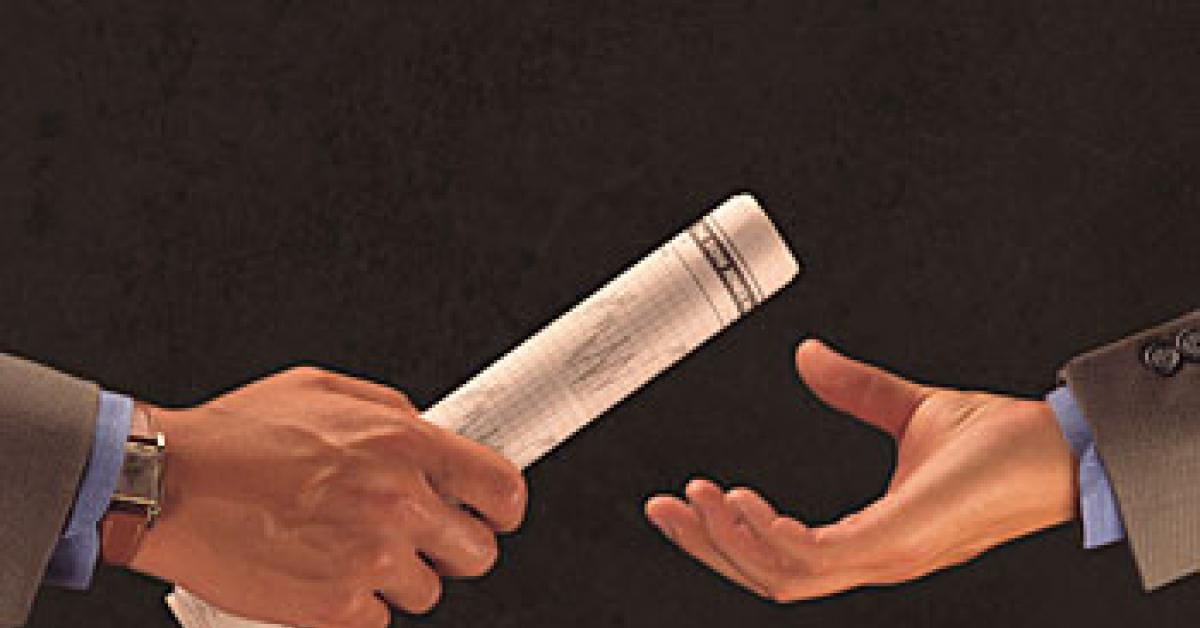ARDMORE, Pa. — Sooner or later, every dry cleaner thinks about retirement. For those who own a closely held or family business, retirement is more than just a matter of deciding not to go to work anymore. In addition to ensuring there will be enough money to retire, dry cleaning business owners, shareholders and partners must decide what will happen to the business when they are no longer in control.
An effectively developed succession plan can involve selling the business to provide a retirement nest egg, or continuation of the dry cleaning business, with gradual changes in management and/or control, to ensure a source of retirement income or any combination thereof.
One of the more important aspects of business succession planning is working out the financial pitfalls following the death of the business owner. That requires answering questions such as where the money to pay taxes will come from, or, if the business is a partnership, where the money to buy out the deceased partner’s share will come from.
PLANNING BASICS
At its most basic, a succession plan is a documented road map to be followed in the event of the owner, partner or shareholder’s death, disability, or retirement. The plan can include a program for distributing the stock of the dry cleaning business and other assets, retiring the operation’s debt, obtaining life insurance policies, buy-sell agreements between partners and heirs, dividing responsibilities among successors, and any other elements that affect the business or its assets.
The tax component of succession planning addresses the minimization of taxes upon death. Tax law changes in 2001 eliminated the so-called “death tax.” The estate tax rose from the grave at the end of 2010, with a Bush-era top rate of 35% and an applicable exclusion amount of $5 million ($5.12 million in 2012).
In 2013, the death tax will revert to its pre-2001 form. The applicable exclusion amount will plummet to $1 million, and the top marginal rate will leap 20 percentage points to 55%. A 5% surtax will also return, to be levied on estates between $10 million and $17 million. This raises the top effective rate of the death tax to 60%.
GIVING IT AWAY
A key way to reduce estate taxes is to lower the value of assets that are in the estate. So-called “gifting” can legitimately lower any owner, partner or shareholder’s tax liability. Fortunately, there are several strategies for making gifts outright, and all serve to reduce the amount of the overall estate:
- Annual gift-tax exclusions: Currently, property valued at up to $13,000 per year per donee (person gifted) may be gifted without any gift-tax consequence.
- Other gift-tax exclusions: Gifts for the purposes of the donee’s health or education are excluded from gift-tax calculations (this is why parents could seemingly pay unlimited amounts for their children’s doctor appointments and, for some lucky ones, schooling expenses).
- Lifetime gift-tax exemptions: In 2011 and 2012, giving lifetime gifts totaling up to $5 million before any estate, gift or generation-skipping taxes are imposed is possible.
Unfortunately, none of these gifting strategies directly benefit the dry cleaning business. But other strategies for transferring a dry cleaning business, strategies that frequently include retaining control, do exist.
FLIPPING FOR FLPS
Controlling the dry cleaning business through a family limited partnership (FLP) or a family limited liability company (FLLC) offers the added benefit of gifting shares at considerable discounts. A FLP or FLLC also helps when transferring a business interest to family members.
First, a partnership with both general and limited partnership interests is created. Then, the business is transferred to this partnership. A general partnership interest is retained for the owner, allowing a continuation of control over the day-to-day operations. Over time, the limited partnership interest is gifted to family members.
BUY-SELL AGREEMENTS
A buy-sell agreement, often called a “business prenup,” is a legal contract that prearranges the sale of a business interest to a willing buyer. A buy-sell agreement allows the seller to keep control of his or her interest until an event specified in the agreement occurs, such as the seller’s retirement, disability or death. Other events such as divorce can also be included as triggering events under a buy-sell agreement.
When the triggering event occurs, the buyer is obligated to buy the interest from the seller, or the seller’s estate, at its fair market value (FMV). The buyer can be a person, a group (such as co-owners), or the business itself. Price and sale terms are prearranged, eliminating the need for a fire sale should the owner, partner or major shareholder become ill or die.
SELLING IT TO THE EMPLOYEES
An Employee Stock Ownership plan (ESOP) allows owners of incorporated dry cleaning businesses to sell their stock to the ESOP and defer the capital gains tax. Ownership can be transferred to the operation’s employees over time, while the business gets income tax deductions for contributions to the plan. An ESOP not only provides a market for the shares of owners who leave the business, it is a strategy for rewarding and motivating employees.
Check back tomorrow for Part 2!
Information in this article is provided for educational and reference purposes only. It is not intended to provide specific advice or individual recommendations. Consult a tax adviser for advice regarding your particular situation.
Have a question or comment? E-mail our editor Dave Davis at [email protected].
